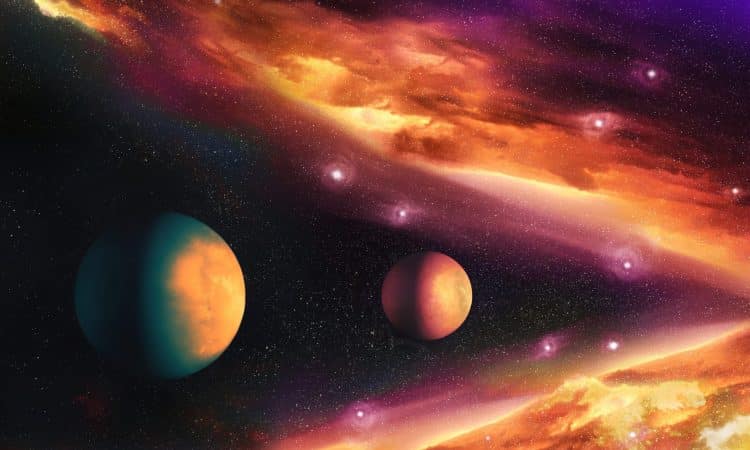
Using NASA’s exoplanet-hunting probe, the Transiting Exoplanet Survey Satellite (TESS), scientists have spotted a record-breaking triple star system so tightly bound that it could fit comfortably between the Sun and its nearest planet, Mercury .
The system, called TIC 290061484, contains twin stars that orbit each other every 1.8 Earth days, as well as a third star that orbits the pair every 25 Earth days.
The very close orbit of this triple star system, located just under 5,000 light-years away in the constellation Cygnus, the Swan, makes it a record.
The previous record holder for the closest orbit is Lamba Tauri, which set the record in 1956, with its third star taking 33 days to orbit its inner twin stars.
The discovery team included scientists who met as part of the now-closed Planet Hunters project, which ran from 2010 to 2013. Amateurs joined with professional astronomers to form the Visual Survey Group collaboration, which operates from a decade.
The system could fit between the Sun and Mercury
“Due to the system’s compact and edge-on configuration, we can measure the orbits, masses, sizes and temperatures of its stars,” Veselin Kostov, a team member at NASA’s Goddard Space Flight Center and part of the SETI Institute, said in a statement.
The team believes that the TIC 290061484 star system is very stable because the stars orbit each other in nearly the same plane. If the stars’ orbits were tilted in different directions, their gravitational influences would disrupt their orbits, making the system unstable.
However, this stability will not last forever – perhaps a few million years. While that’s a long time to us, in our 13.8 billion year old cosmos it’s just the blink of an eye.
As the twin stars in the heart age, they will expand outward and eventually merge. This will trigger a massive supernova explosion in about 20 to 40 million years.
The stars formed together from the same growth process
Fortunately, this is unlikely to have an impact around the three stars, as there do not appear to be any planets close enough to the stars to support life (at least as we know it).
“We think the stars formed together from the same accretion process, which would have disrupted the formation of planets very close to either star,” Rappaport said.
However, it is possible that a very distant planet exists in the system TIC 290061484, orbiting the three stars as if they were one, he writes
The team spotted the record-breaking triple star system due to the strobe starlight caused by stars crossing in front of each other, as seen from our position on Earth.
The team used machine learning to analyze large amounts of data from TESS and detect a pattern that points to these eclipses.

